Creating an environmentally conscious home starts with the furniture you choose. Eco-friendly furniture options reduce waste, minimize carbon footprints, and promote healthier living spaces. With growing awareness about sustainability, more homeowners are seeking stylish yet planet-friendly alternatives.
In this comprehensive guide, we’ll explore 10 sustainable furniture choices, their benefits, and how they contribute to a greener future. Whether you’re furnishing a new home or upgrading your current space, these options will help you make responsible decisions without compromising on quality or aesthetics.
Why Sustainable Furniture Matters
Before diving into the best eco-friendly furniture options, it’s important to understand their impact:
- Reduces deforestation – Sustainably sourced wood comes from responsibly managed forests.
- Lowers carbon emissions – Recycled and upcycled materials require less energy to produce.
- Improves indoor air quality – Non-toxic finishes and adhesives prevent harmful chemical off-gassing.
- Supports ethical production – Many eco-conscious brands prioritize fair wages and safe working conditions.
Making mindful choices helps protect natural resources while creating a healthier home.
1. Reclaimed Wood Furniture

Reclaimed wood is one of the most popular eco-friendly furniture options. Sourced from old barns, factories, and even shipping pallets, it gives discarded wood a new purpose.
Benefits of Reclaimed Wood
- Prevents waste – Diverts wood from landfills.
- Unique aesthetic – Each piece has distinct grains, knots, and weathering.
- Highly durable – Older wood is often denser and more stable than new lumber.
Best Uses for Reclaimed Wood
- Dining tables
- Bookshelves
- Bed frames
- Coffee tables
By choosing reclaimed wood, you help reduce the demand for newly harvested timber while preserving the character of aged wood.
2. Bamboo Furniture
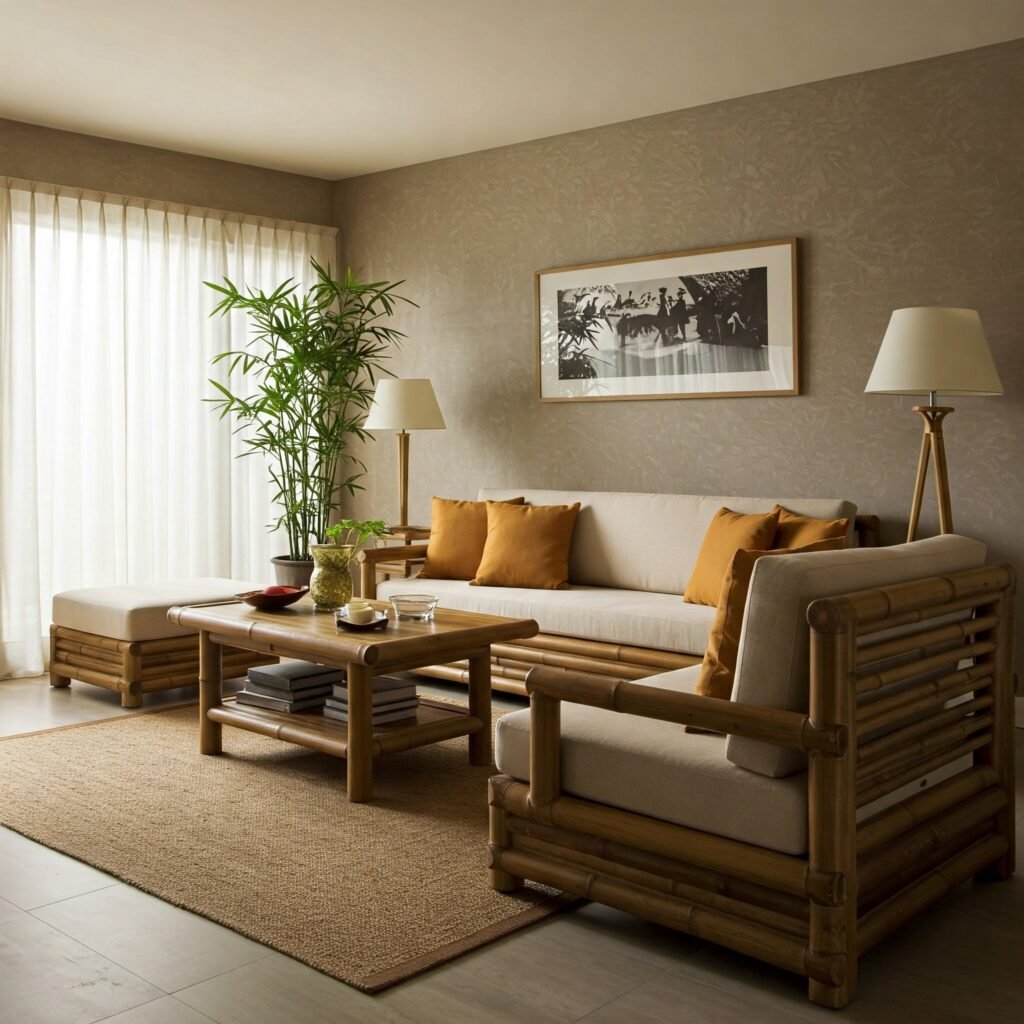
Bamboo is a rapidly renewable resource, making it an excellent choice for sustainable furniture. Unlike hardwood trees that take decades to mature, bamboo reaches full growth in just 3-5 years.
Why Bamboo is Eco-Friendly
- Fast-growing – Doesn’t require replanting after harvesting.
- Strong yet lightweight – Ideal for chairs, desks, and flooring.
- Naturally pest-resistant – Reduces the need for chemical treatments.
Top Bamboo Furniture Pieces
- Dining chairs
- Shelving units
- Nightstands
- Flooring
Since bamboo is biodegradable, it’s a smart choice for eco-conscious homeowners.
3. Recycled Metal Furniture
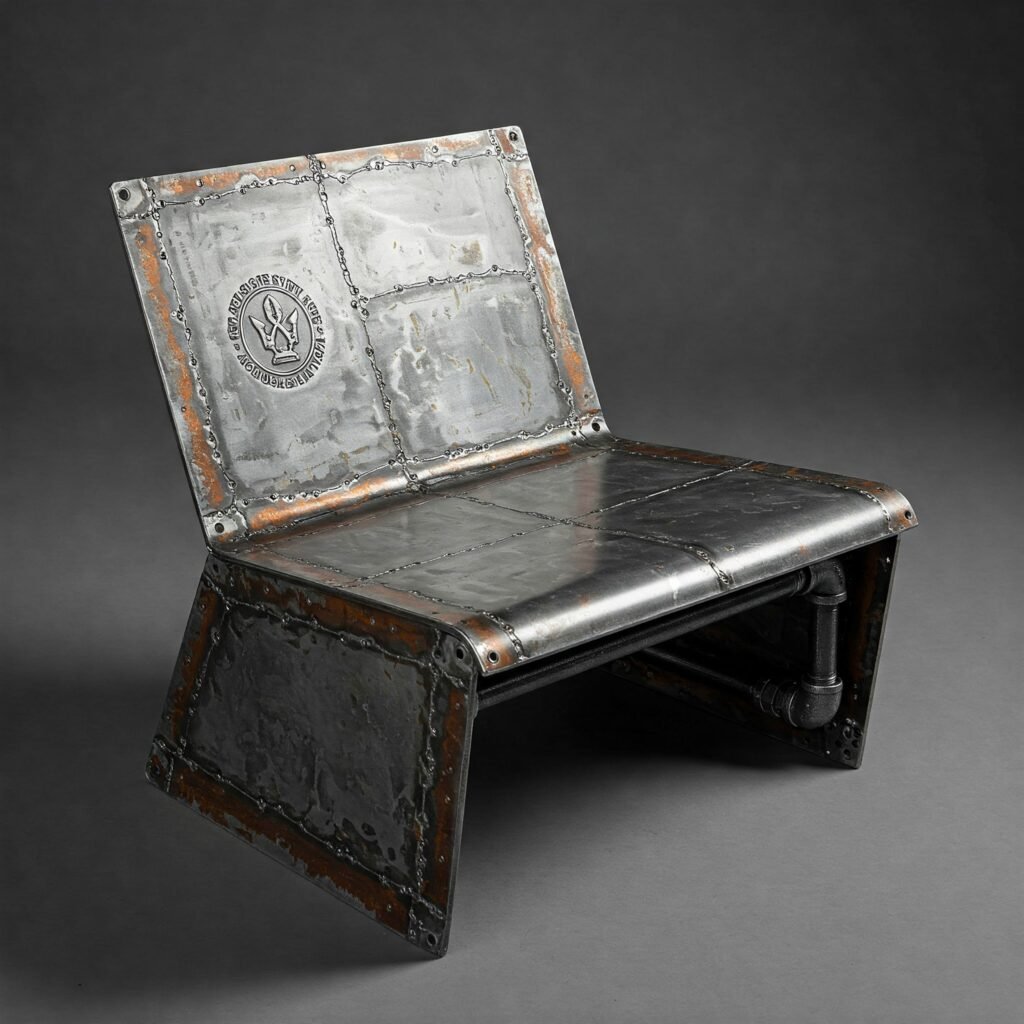
Recycled metal furniture is both stylish and sustainable. Aluminum, steel, and iron can be melted down and repurposed without losing quality.
Advantages of Recycled Metal
- Energy-efficient production – Uses significantly less energy than mining new metal.
- Extremely durable – Resistant to wear, rust, and weather damage.
- Modern appeal – Sleek, industrial designs fit contemporary homes.
Popular Uses for Recycled Metal
- Outdoor patio sets
- Bed frames
- Office desks
- Bar stools
Opting for recycled metal helps reduce mining pollution and lowers energy consumption.
4. Cork Furniture
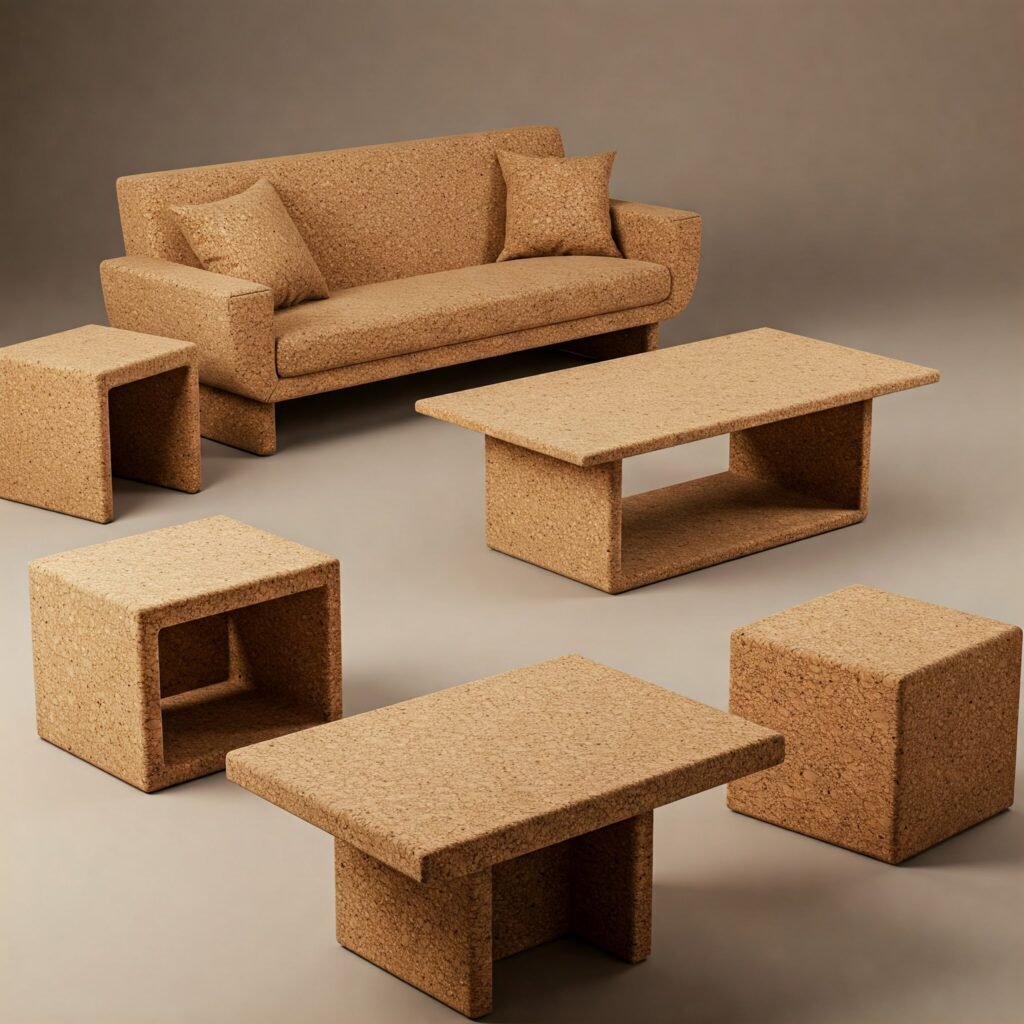
Cork is a sustainable material harvested from the bark of cork oak trees without harming them. It’s renewable, biodegradable, and surprisingly versatile.
Why Cork is a Great Eco-Friendly Option
- Sustainable harvesting – Trees regenerate their bark every 9-12 years.
- Soft and comfortable – Ideal for seating and flooring.
- Natural insulator – Helps regulate temperature and reduce noise.
Best Cork Furniture Pieces
- Ottomans and stools
- Wall panels
- Flooring tiles
- Bulletin boards
Cork’s unique texture and eco-friendly properties make it a great addition to any home.
5. Upcycled Furniture
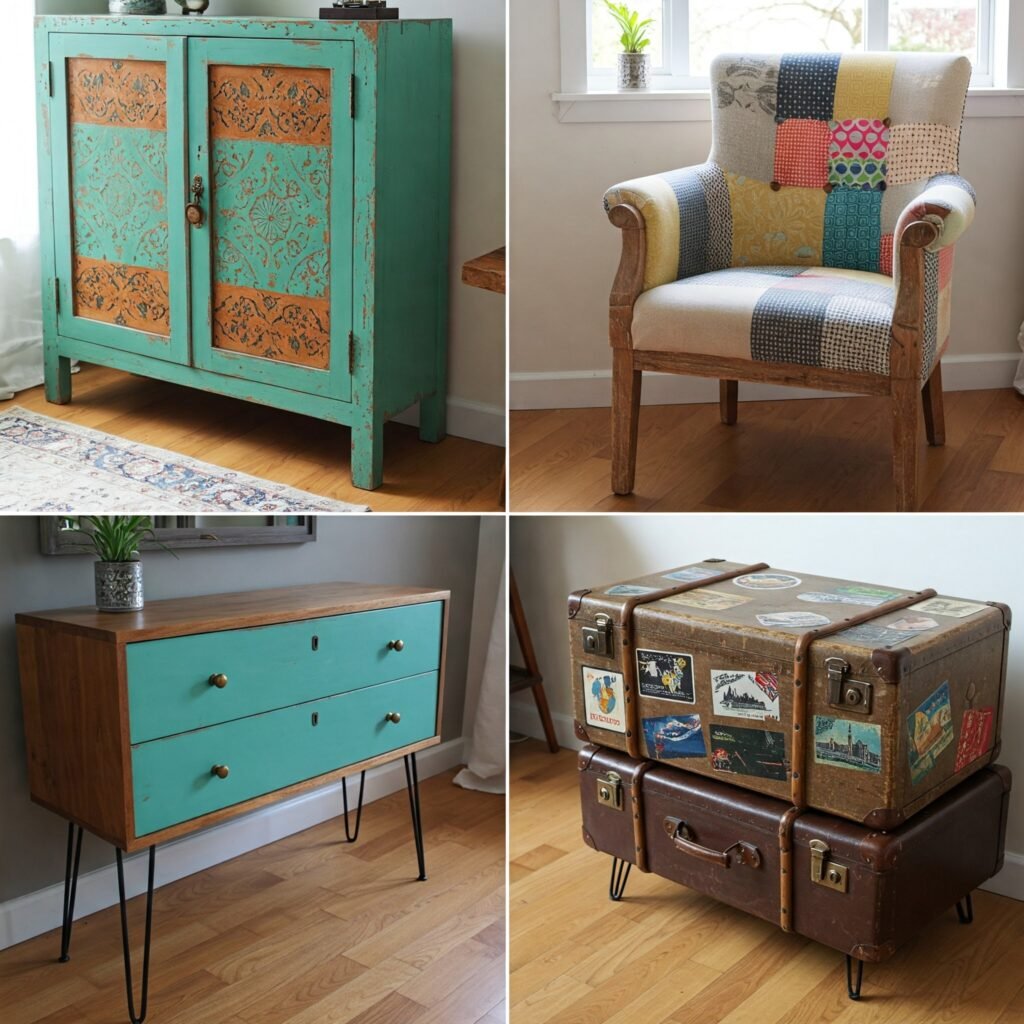
Upcycling transforms discarded items into functional, stylish furniture. Instead of buying new, you can breathe new life into old pieces.
Benefits of Upcycled Furniture
- Reduces landfill waste – Gives old items a second chance.
- Budget-friendly – Often cheaper than buying brand-new furniture.
- One-of-a-kind designs – Each piece has a unique story.
Creative Upcycling Ideas
- Turning wooden crates into bookshelves
- Converting old doors into dining tables
- Repainting and reupholstering vintage chairs
Upcycling is a creative way to reduce waste while adding character to your home.
6. FSC-Certified Wood Furniture
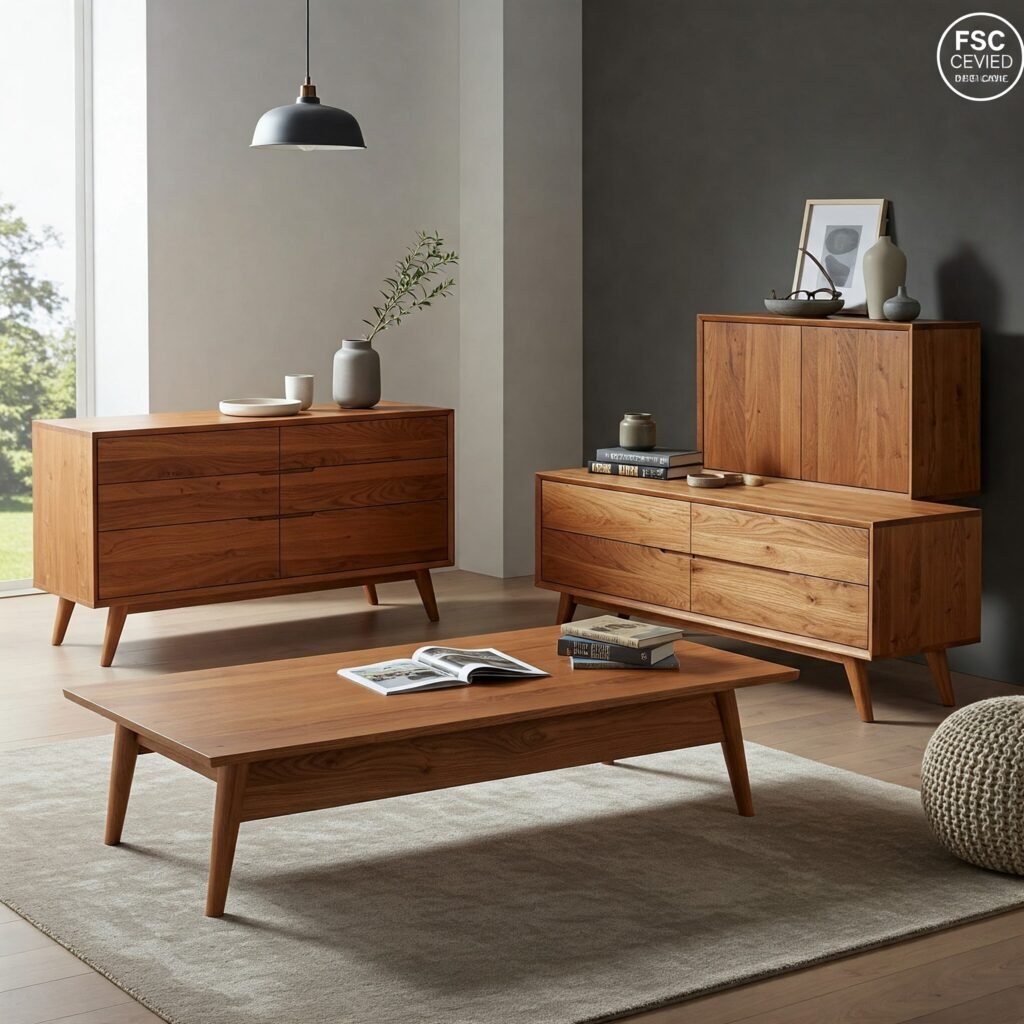
The Forest Stewardship Council (FSC) certifies wood sourced from responsibly managed forests. Choosing FSC-certified furniture ensures environmental and social responsibility.
Why FSC Certification Matters
- Protects forests – Ensures sustainable logging practices.
- Supports biodiversity – Maintains healthy ecosystems.
- Promotes ethical labor – Guarantees fair wages and safe working conditions.
Best FSC-Certified Furniture
- Sofas with FSC-certified frames
- Solid wood dining tables
- Bedroom sets
When shopping for wood furniture, always look for the FSC label.
7. Hemp Furniture
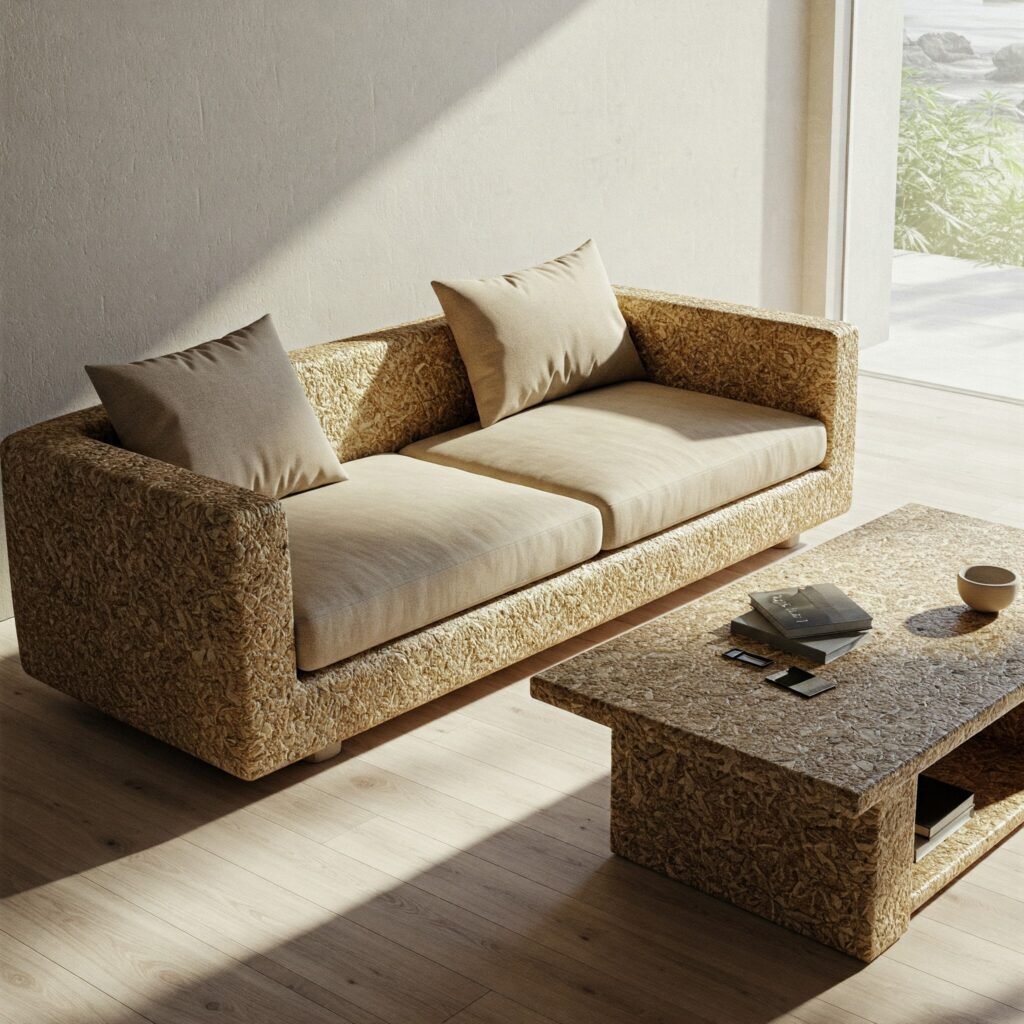
Hemp is a highly sustainable material that grows quickly without pesticides. It’s durable, biodegradable, and can be used in various furniture designs.
Benefits of Hemp Furniture
- Low environmental impact – Requires minimal water and no chemicals.
- Strong and long-lasting – Resistant to mold and UV damage.
- Breathable and comfortable – Ideal for upholstery.
Popular Hemp Furniture Items
- Hemp fabric sofas
- Woven hemp chairs
- Hemp rugs
Hemp is an excellent choice for those seeking natural, eco-friendly materials.
8. Wool and Organic Cotton Upholstery
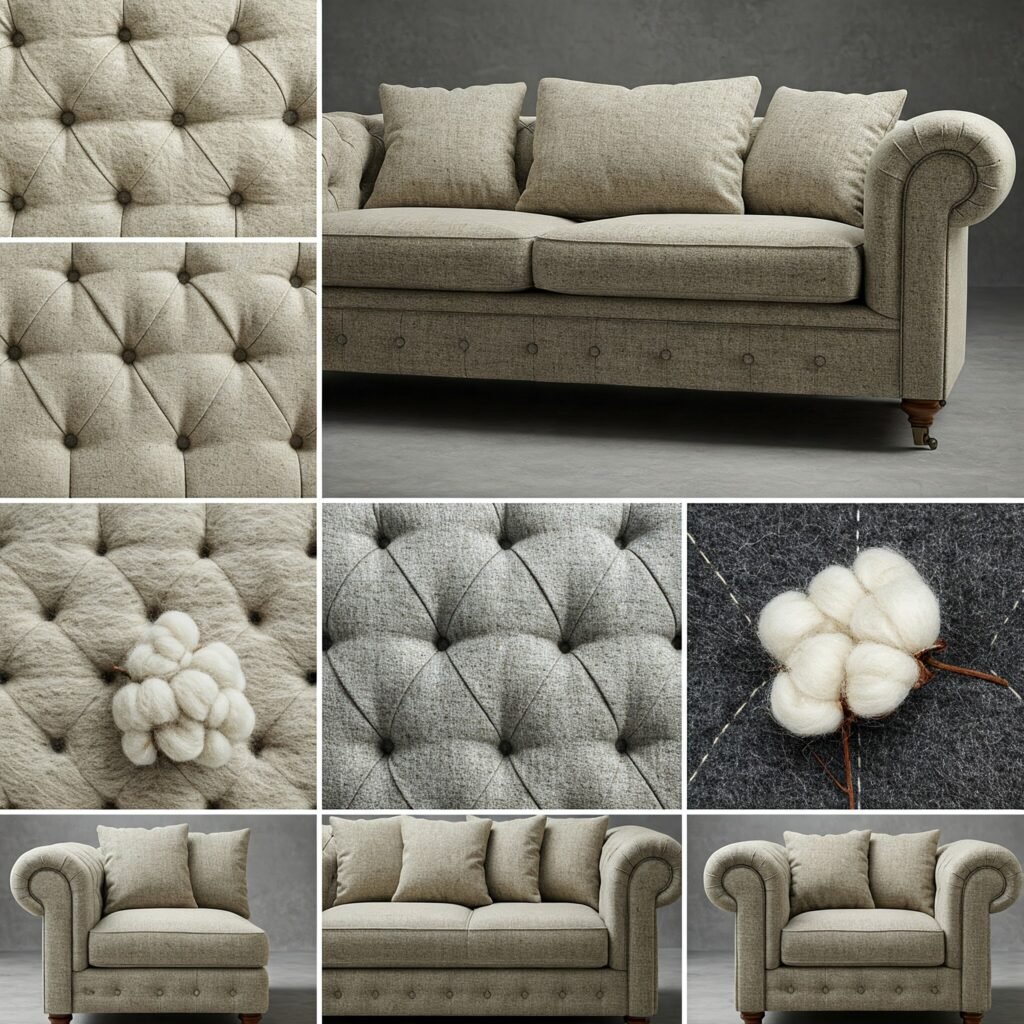
Conventional upholstery often contains synthetic fibers and toxic chemicals. Wool and organic cotton provide a healthier, more sustainable alternative.
Why Choose Natural Upholstery?
- Non-toxic – Free from harmful flame retardants.
- Biodegradable – Breaks down naturally at the end of its life.
- Breathable – Regulates temperature and reduces allergens.
Best Uses for Wool and Organic Cotton
- Sofas and armchairs
- Mattress toppers
- Throw pillows
These natural fabrics enhance comfort while supporting sustainable farming.
9. Glass and Recycled Plastic Furniture
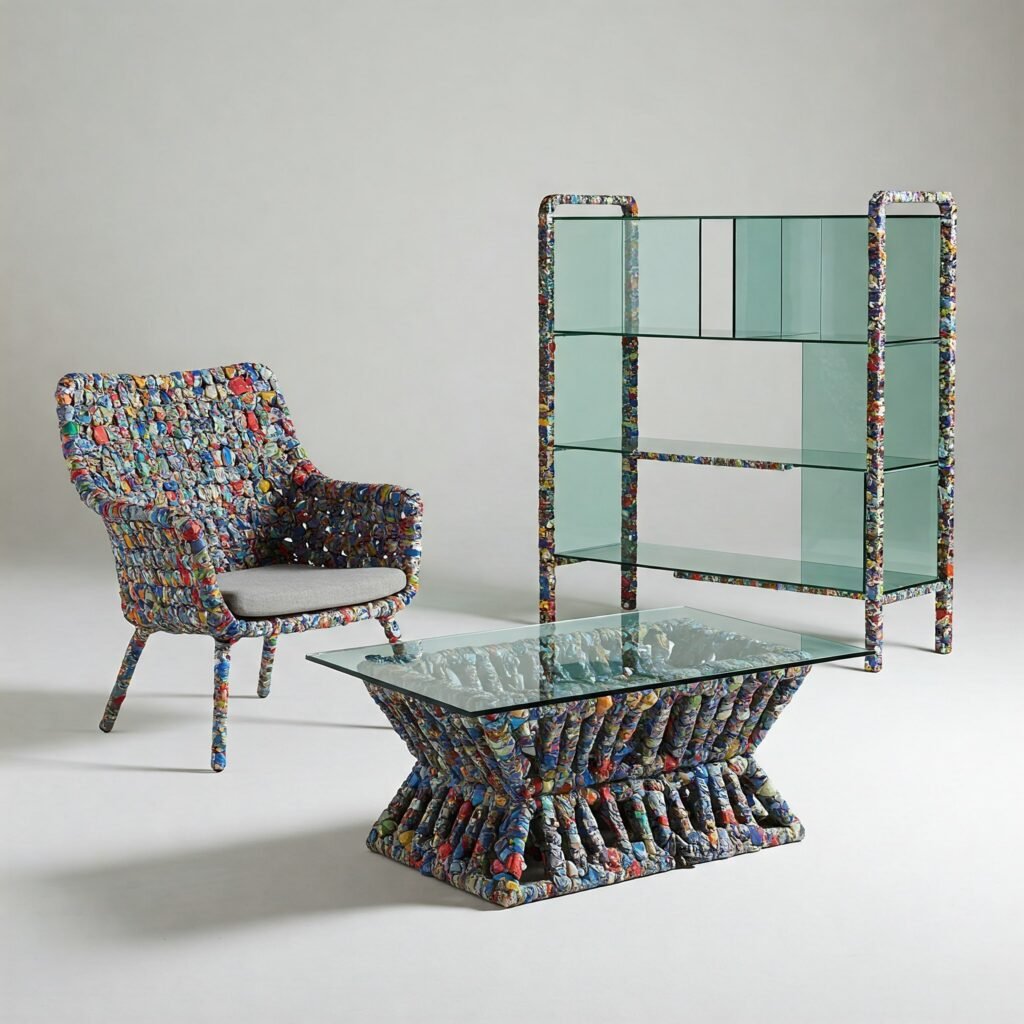
Recycled glass and plastic furniture helps reduce waste while offering modern, minimalist designs.
Advantages of Recycled Materials
- Reduces plastic pollution – Repurposes existing waste.
- Easy to clean and maintain – Resistant to stains and moisture.
- Versatile designs – Works well indoors and outdoors.
Best Recycled Furniture Options
- Recycled plastic Adirondack chairs
- Glass tabletops with recycled bases
- Outdoor benches made from reclaimed materials
These options prove that sustainability can be both functional and stylish.
10. Modular and Multi-Functional Furniture
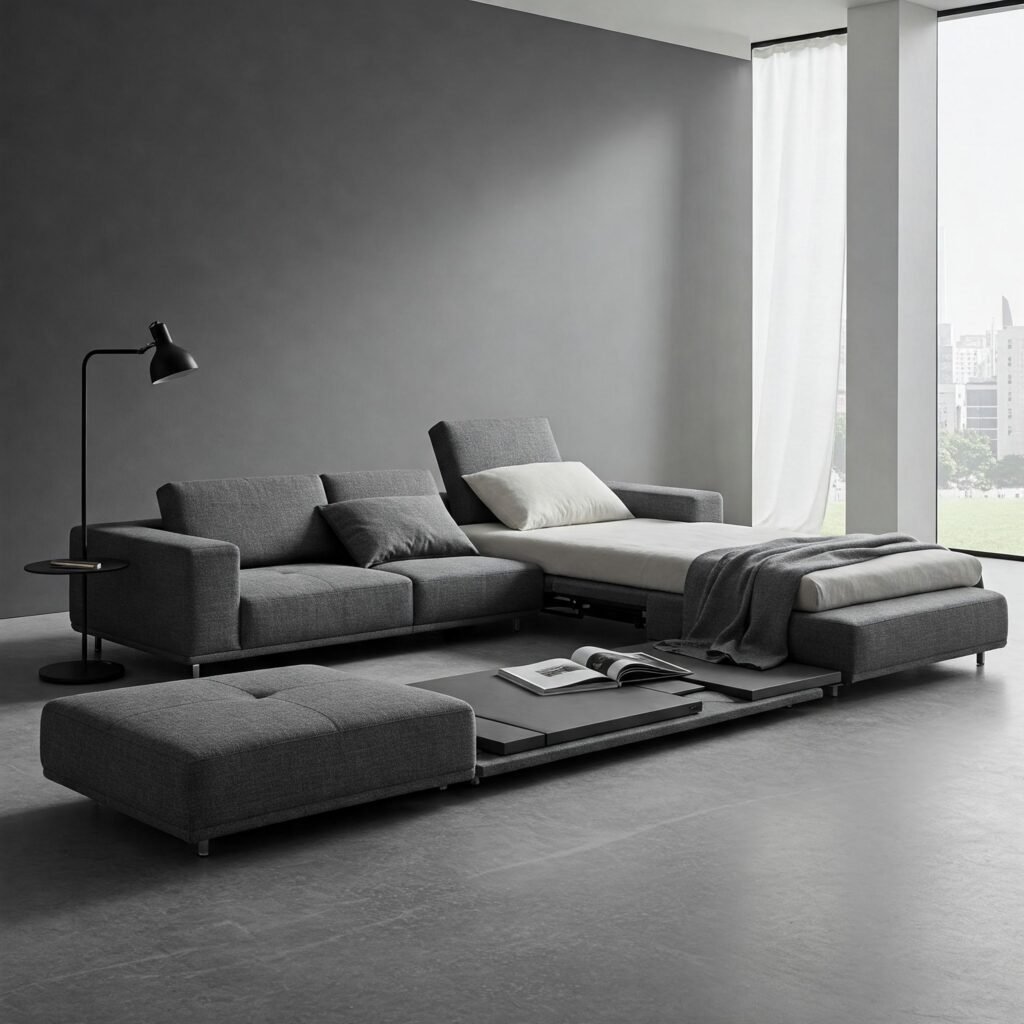
Modular furniture adapts to different needs, reducing the need for excess pieces. Multi-functional designs maximize space and efficiency.
Why Modular Furniture is Sustainable
- Reduces overconsumption – One piece serves multiple purposes.
- Long-lasting – Can be reconfigured instead of replaced.
- Space-saving – Ideal for small homes and apartments.
Best Modular Furniture Ideas
- Sofa beds
- Expandable dining tables
- Wall-mounted desks
Investing in adaptable furniture minimizes waste and enhances practicality.
How to Choose the Best Eco-Friendly Furniture
Now that you know the top sustainable options, here’s how to make the best choice:
- Check for certifications (FSC, Greenguard, Cradle to Cradle).
- Avoid toxic finishes – Look for water-based stains and natural oils.
- Buy local – Reduces transportation emissions.
- Prioritize durability – High-quality pieces last longer, reducing waste.
- Consider secondhand or vintage – Extends the life of existing furniture.
Final Thoughts
Choosing eco-friendly furniture is a powerful way to reduce your environmental impact while creating a beautiful, healthy home. From reclaimed wood to modular designs, each sustainable option offers unique benefits.
Start by replacing one piece at a time, and soon, your entire home will reflect your commitment to sustainability. Every small choice adds up, making a meaningful difference for the planet.
Would you like recommendations for eco-conscious furniture brands? Share your thoughts in the comments!
